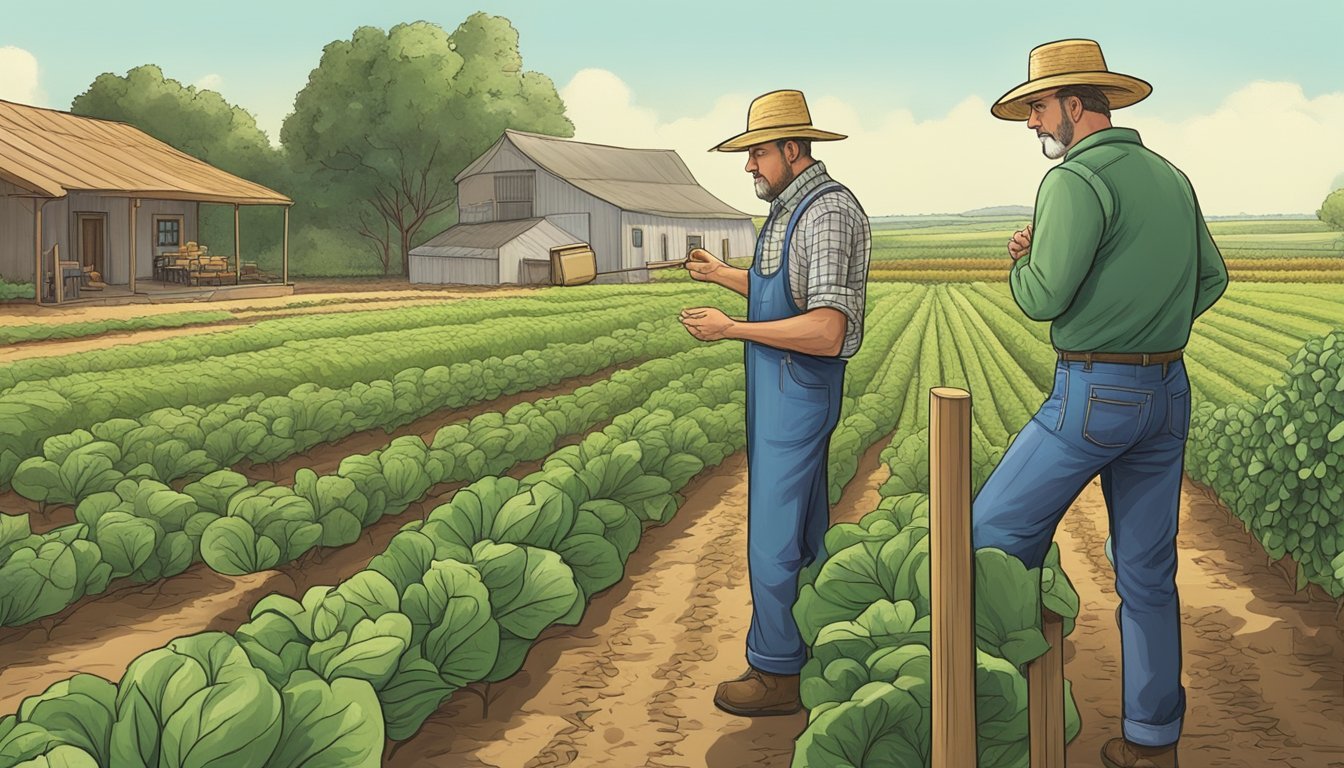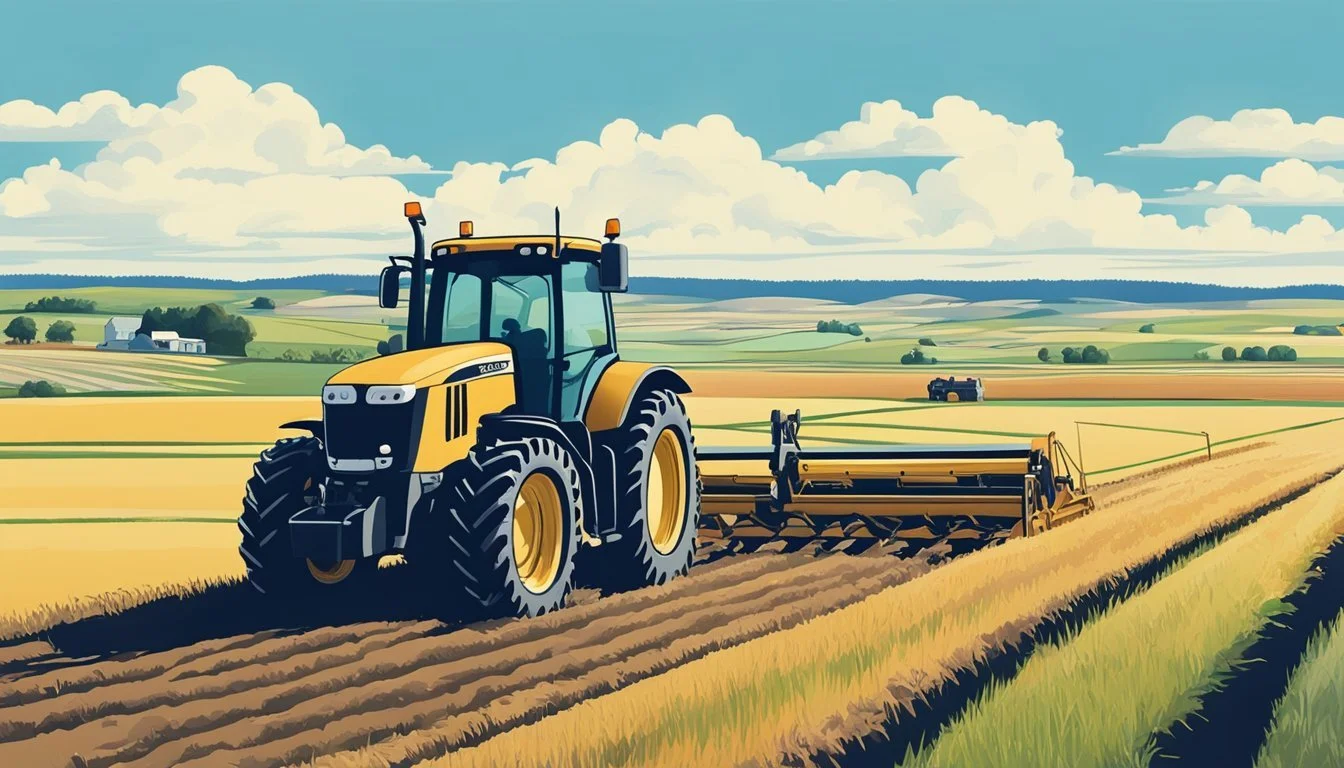Right to Farm Law in South Dakota
Understanding Agricultural Protections
The Right to Farm Law in South Dakota serves as a shield for agricultural operations, reinforcing the state's commitment to its agrarian roots and economy. Enacted with the objective of protecting and preserving farming activities, the legislation acknowledges the vital role that agriculture plays in the state's livelihood. This law attempts to deter nuisance lawsuits against farmers and ranchers, potentially providing them with a legal defense against complaints concerning noise, odor, and other inconveniences typically associated with farming practices.
In practical terms, the Right to Farm Law in South Dakota helps to maintain the stability of agricultural operations by allowing them to function without the constant threat of litigation that could arise from expanding urban interfaces. However, the decline in farm numbers and farmland acreage since the law's inception in 1991 raises questions about its impact and effectiveness.
The continuous evolution of this legislation demonstrates the state's response to changing agricultural and societal landscapes. Recent amendments have endeavored to clarify the parameters of the law, such as the particulars of who and under what circumstances one can bring forth a lawsuit, as well as detailing the scope of protection and defense it offers to farm operations. These legislative modifications reflect South Dakota's persistent efforts to balance the interests of its agricultural community with those of its broader population.
Historical Background
Right-to-farm laws are critical to preserving the agricultural backbone of a state, and in South Dakota, they represent a commitment to protecting a longstanding agricultural tradition. The importance and development of these laws highlight how agriculture defines the state's legacy.
Evolution of Right-to-Farm Laws
Right-to-farm laws were instituted to bolster farmers against nuisance lawsuits as the urban sprawl encroached into rural areas. The initial South Dakota right-to-farm law dates back to 1991 and was established as a measure to defend the interests of the farming community. Over the years, these laws have evolved, adapting to changes in agricultural operations and pressures from non-agricultural development. The National Agricultural Law Center provides detailed overviews of state right-to-farm statutes, reflecting these legislative changes nationwide, including those in South Dakota.
The progression of right-to-farm laws responded to a need to balance the growth of agricultural operations with the rights of neighboring property owners. This included clarifying definitions and updating requirements to fit modern agricultural practices, ensuring that the statutes provide effective and relevant protections.
Agricultural Significance in South Dakota
Agriculture is an economic cornerstone in South Dakota, making the protection provided by right-to-farm statutes essential for the state. Since the passing of the first right-to-farm law there, South Dakota has seen changes in its agricultural landscape, with a reported 14 percent reduction in the number of farms and a 4 percent decrease in farmland acreage. This shift underscores the importance of right-to-farm laws in safeguarding existing agricultural operations.
These statutes support South Dakota's resolution to maintain its agricultural heritage amid evolving societal and economic landscapes. The compliance with right-to-farm laws is vital for existing operations, given their role in the state's economy and identity. The National Agricultural Law Center's research illuminates these state-specific statutes' crucial role in framing the legal context for the agricultural sector in South Dakota.
Purpose and Intent of the Law
The Right to Farm Law in South Dakota serves to uphold vital aspects of the state's agricultural framework by establishing legal protections for farming operations.
Protection Against Nuisance Lawsuits
The Right to Farm Law provides essential protections to farm owners and operators from nuisance lawsuits, which could otherwise threaten the viability of agricultural activities. It effectively shields:
Agriculture: Lawful agricultural operations from being deemed a nuisance after subsequent changes in land use or occupancy in the area.
Farm Owners: Long-standing farms from potentially harmful legal challenges that arise from normal farm operations.
Safeguarding Farming Operations
In aiming to safeguard farming operations, the Right to Farm Law ensures that agriculture can continue to thrive without interference from incompatible land uses. Specifically, the law helps to:
Preserve Farmland: It prevents urban encroachment and secures farmland for future agricultural use.
Support Legacy: It bolsters South Dakota's farming legacy by offering a degree of stability and predictability for farmers and ranchers.
Key Provisions
South Dakota's Right-to-Farm laws are designed to uphold the stability of agricultural operations by defining acceptable farming practices and providing guidelines to protect farmers from nuisance lawsuits.
Law Parameters and Definitions
Under South Dakota Codified Laws §§ 21-10-25.1 to 21-10-25.6, Right-to-Farm statutes are outlined to protect existing agricultural operations. These laws establish clear parameters for what constitutes a nuisance and what is considered accepted agricultural practice. They also clarify the responsibilities and protections afforded to the landowner, ensuring that the operations in place before the arrival of new residents are not unfairly affected by nuisance claims.
Nuisance: Unreasonable interference with the use and enjoyment of land.
Landowner: An individual or entity with legal ownership or control over agricultural land.
Allowed Agricultural Practices
The law specifies types of activities that are recognized as Allowed Agricultural Practices. Such practices are deemed necessary for the maintenance and functioning of an effective agricultural operation. The state laws shield agricultural practices that are:
Established prior to surrounding non-agricultural developments
Defined as normal, irrespective of the time and day they occur
Furthermore, they provide a legal defense for operations accused of being a nuisance if they adhere to generally accepted agricultural practices, even if they evolve with new technology or methods. The practices aren't explicitly listed in statutes but encompass a wide range, including but not limited to:
Crop cultivation
Livestock rearing
Application of pesticides and fertilizers
Federal laws may also play a part, particularly when agricultural practices intersect with environmental and safety regulations. However, the primary focus of the Right-to-Farm law in South Dakota remains grounded in state statutes designed to protect farmers and their livelihoods.
Legal Challenges and Interpretations
South Dakota's Right-to-Farm laws have undergone scrutiny through legal challenges, often leading to interpretations by the courts. These cases have implications for agricultural operations, plaintiffs, lawsuit proceedings, and the rules governing attorney's fees.
Notable Cases in South Dakota
South Dakota has seen a number of lawsuits where the Right-to-Farm statute has been a central issue. These lawsuits typically pit agricultural operations against individuals or groups who have raised concerns about nuisances allegedly caused by farming activities. In these cases, the plaintiffs have sought remedies for the claimed interferences with their property or lifestyle.
Case Name: (Year)
Outcome:
Relevance:
Case Name: (Year)
Outcome:
Relevance:
(This list of cases would include specifics such as the name of the case, year it was decided, and relevant facts/outcomes to illustrate how Right-to-Farm laws in South Dakota are applied and challenged in a legal context.)
Role of South Dakota Supreme Court
The South Dakota Supreme Court plays a crucial role in interpreting the Right-to-Farm laws. Through their decisions, the Supreme Court of South Dakota has clarified the scope and applicability of the statute, setting precedents that guide lower courts and shape the future of farming-related litigation.
Case Law Examples:
Supreme Court Case Name (Year): This case clarified the statutory protections for agricultural producers.
Supreme Court Case Name (Year): Here, the court examined who may qualify as a plaintiff in a Right-to-Farm law case.
In each of these Supreme Court rulings, the question of attorney's fees and costs can be a significant factor, often influencing the proceedings of a lawsuit and potentially impacting the willingness of parties to engage in litigation.
Limitations and Exceptions
The Right-to-Farm law in South Dakota offers protections to agricultural operations, but these are not without certain limitations and exceptions. These provisions are critical in determining the extent to which agricultural activities are shielded from nuisance claims and possible liability.
Non-Protected Farm Activities
Under South Dakota's Right-to-Farm law, not all activities conducted on a farm are protected. Activities that fall outside the scope of legal agricultural operations—such as those failing to comply with state and federal regulations—may not be eligible for Right-to-Farm defenses. Specifically, the statute provides no shelter for operations deemed a public nuisance due to unlawful practices or those endangering the health and safety of the public.
Threshold for Unreasonable Nuisance
For a nuisance claim to be actionable against a farm operation shielded by the Right-to-Farm law, the claimant must prove the nuisance is unreasonable. South Dakota's Right-to-Farm statute necessitates that the agricultural operation in question has been in existence longer than one year. This introduces a time barrier for nuisance claims, establishing a threshold that balances the interests of long-standing farming operations against those of affected individuals.
Impact on Land Use and Development
Right-to-Farm laws in South Dakota influence land use by balancing the needs of agricultural activities with those of development initiatives. These legislations navigate the complexities between preserving farming practices and accommodating non-agricultural land demands.
Agricultural Land Preservation
In South Dakota, Right-to-Farm laws are essential in safeguarding agricultural land — referred to as "ag land" — against the pressures of non-farming uses. The primary intent of these legislations is to protect existing farms and their operations, ensuring that agricultural activities can continue without the threat of nuisance lawsuits which often arise from new neighbors who may be unfamiliar with the realities of agricultural life. County and municipal governments consider these laws in their zoning decisions to support the agriculture industry, which is crucial for the state's economy.
Construction and Urban Expansion
As for construction and urban expansion, Right-to-Farm laws in South Dakota play a defensive role. With township development on the rise, these laws make it more challenging for residential and commercial developments to encroach upon farmland. There is a careful consideration to limit urban sprawl and to delineate clear boundaries where agricultural use is given preference to preserve rural character and limit the reduction of farm acreage. Consequently, developers in South Dakota must navigate these laws, which can add an additional layer of complexity to planning and zoning processes.
Dispute Resolution and Avoidance
In South Dakota, the right-to-farm laws have specific provisions aimed at dispute resolution and avoidance, emphasizing the role of community in maintaining agricultural harmony and outlining clear preventative measures to reduce the incidence of nuisance claims.
Role of Neighbors and Community
Neighbors play a critical role in the practical application of the right-to-farm statutes. Community engagement is pivotal, as it influences the interpretation and enforcement of these laws. Neighbors often have the opportunity to engage in dialogue with farmers, which can prevent misunderstandings and grievances from escalating into legal disputes. For instance, clear communication about farming practices can preemptively address concerns that might otherwise lead to nuisance claims.
Preventative Measures
Preventative measures are a cornerstone of dispute avoidance in South Dakota's right-to-farm context. Farmers are encouraged to adopt best management practices (BMPs), which are techniques verified to be effective and practical means for farming operations. These practices help mitigate potential disputes by decreasing the likelihood of nuisance claims. Farmers can demonstrate adherence to BMPs and generally accepted agricultural practices as part of a strong defense in case of a legal challenge.
Document practices: Maintaining records that detail farming practices helps establish evidence of compliance with BMPs.
Community outreach: Keeping neighbors informed of operational changes can alleviate concerns and reduce the risk of claims.
By taking proactive steps, farmers and their neighboring community can effectively minimize conflicts that may arise from agricultural operations.
Economic and Environmental Considerations
The Right to Farm laws in South Dakota have significant impacts on the state's agricultural economics and the stewardship of its environmental resources.
Benefit to Local Economies
Agricultural and ranching operations are central to South Dakota's economy, providing both employment and economic stability. The protection offered by Right to Farm laws bolsters the agricultural sector by affirming the rights of landowners and farmers to engage in farming practices without the fear of nuisance lawsuits. This assurance can lead to:
Continued investment in farming operations
Preservation of rural job markets
Support for local businesses that cater to farm and ranch needs
These economic benefits manifest in the sustenance of family farms and the avoidance of market domination by agricultural conglomerates.
Sustainability and Land Stewardship
Right to Farm laws inherently influence how landowners approach environmental management. Recognizing the importance of the land to their livelihoods, farmers and ranchers have an incentive to:
Implement sustainable farming practices to ensure long-term productivity
Protect natural resources such as soil and water quality
South Dakota’s legislation underscores the role of agriculture in maintaining the economic and moral stability of the state while also guiding landowners towards responsible environmental stewardship. The state acknowledges the potential for conflict between agricultural interests and environmental concerns, necessitating a balance that Right to Farm laws attempt to strike.
Future Directions and Amendments
South Dakota is poised to navigate the complexities of Right-to-Farm (RTF) laws with anticipated legislative changes. These reforms will shape future protections and the agricultural landscape of the state.
Anticipated Reforms
Recent legislative amendments suggest a trend in South Dakota’s approach to their RTF laws. House Bill 1090, signed in March, reflects these ongoing changes. It includes provisions that clarify the conditions under which farms are afforded legal protections and tighter restrictions on who may file a lawsuit and what kind of damages they may seek. Stakeholders anticipate further reforms that could do one or more of the following:
Specify operational practices that qualify for RTF defense
Define and perhaps limit public and private nuisance claims
Adjust the list of permissible farm expansions and modifications under RTF law
Potential Impact on State Legislation
The amendments to South Dakota's RTF law have the potential to strongly influence the state’s legislation surrounding agriculture. They serve two primary functions:
Protecting Farmers: By laying out clearer RTF guidelines, the state legislation could provide farmers with more predictable and robust legal defenses.
Community Relations: Amendments may also delineate the balance between farm operation rights and community interests, potentially leading to reduced legal conflicts.
These changes have been reflected in similar alterations in other states like North Carolina, suggesting a possible ripple effect on RTF laws nation-wide. The actual impact on South Dakota's legislation will depend on how these anticipated reforms are implemented and received by the agricultural community and the state’s residents.
Resources and Further Reading
For a comprehensive understanding of South Dakota's Right-to-Farm laws, readers can consult several resources. A particularly authoritative source is The National Agricultural Law Center, which provides a detailed summary of all states' Right-to-Farm statutes, including South Dakota. Their website, NationalAgLawCenter.org, offers current information through the general sessions of the South Dakota Legislative Assembly.
Journal Articles: Academic journals such as the "Journal of Rural Studies" have published articles assessing the Right-to-Farm laws' impact on property rights and rural justice in the United States, providing in-depth analysis for those interested in the subject matter.
Key Legal Documents:
State Statutes: Legal texts, such as those codified in S.D. Codified Laws §§ 21-10-25.1 to 21-10-25.6, are crucial for those seeking the exact legislative language of the Right-to-Farm laws in South Dakota.
Online Resources:
Source Content Description Accessibility National Agricultural Law Center Legal publications and research Online repository One Rural Policy analysis and implications Articles online JSTOR Database Scholarly articles and historical data Subscription-based
For recent news related to the Right-to-Farm laws in South Dakota, regional newspapers and agricultural bulletins can be valuable, as they frequently cover the implications and changes surrounding agricultural policies.
Readers are encouraged to explore these resources to gain a nuanced perspective on the legal, economic, and cultural implications of South Dakota's Right-to-Farm legislation.











